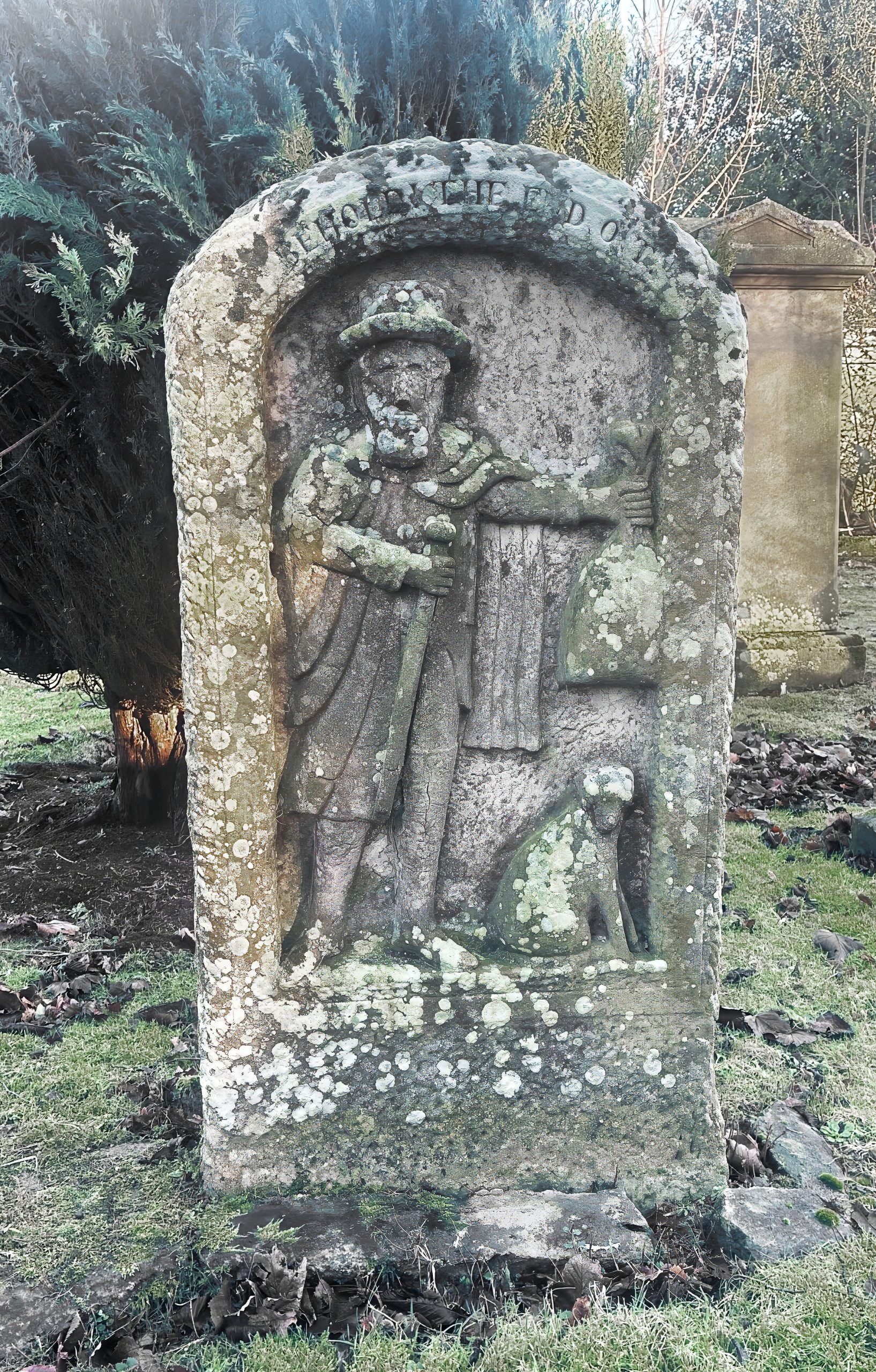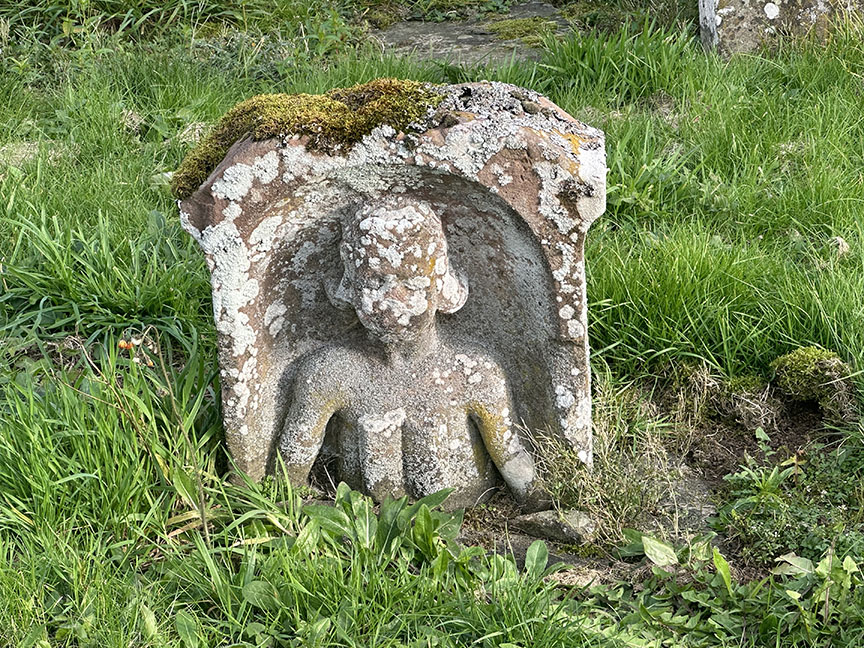Gravestones of the 17th and 18th Century
Crailing Old Church Parish
Scottish Borders
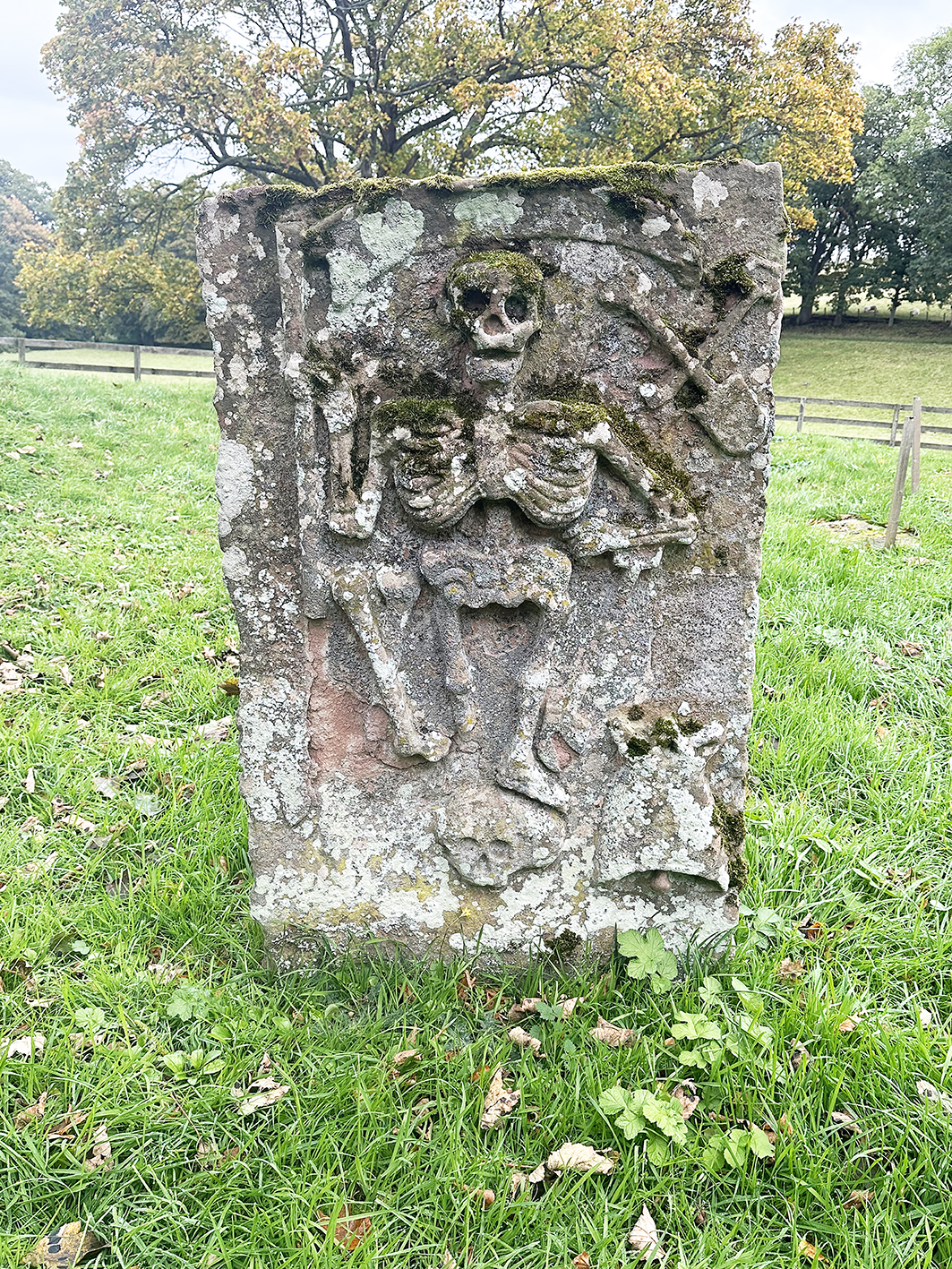
The King of Terrors Gravestone at Crailing Old Parish Churchyard
This old iconic and symbolic headstone of the old church building has survived and the graveyard has been fenced off and preserving a very excellent collection of 17th and 18th-century gravestones from livestock damage. All the symbols on this stone are emblems of mortality, the main one being the standing skeleton with the weapon of death, the scythe. It is the very idea of death, the King of Terrors, an ever-present idea. An upright hourglass is now missing from the right-hand side from above is missing from the right-hand side of the stone above the bell. It is visible in an image taken in 1985 and just shows how worthwhile it is to take record shots of these old gravestones.
Viking Hogback Stone of Luss
Lomond – Scotland
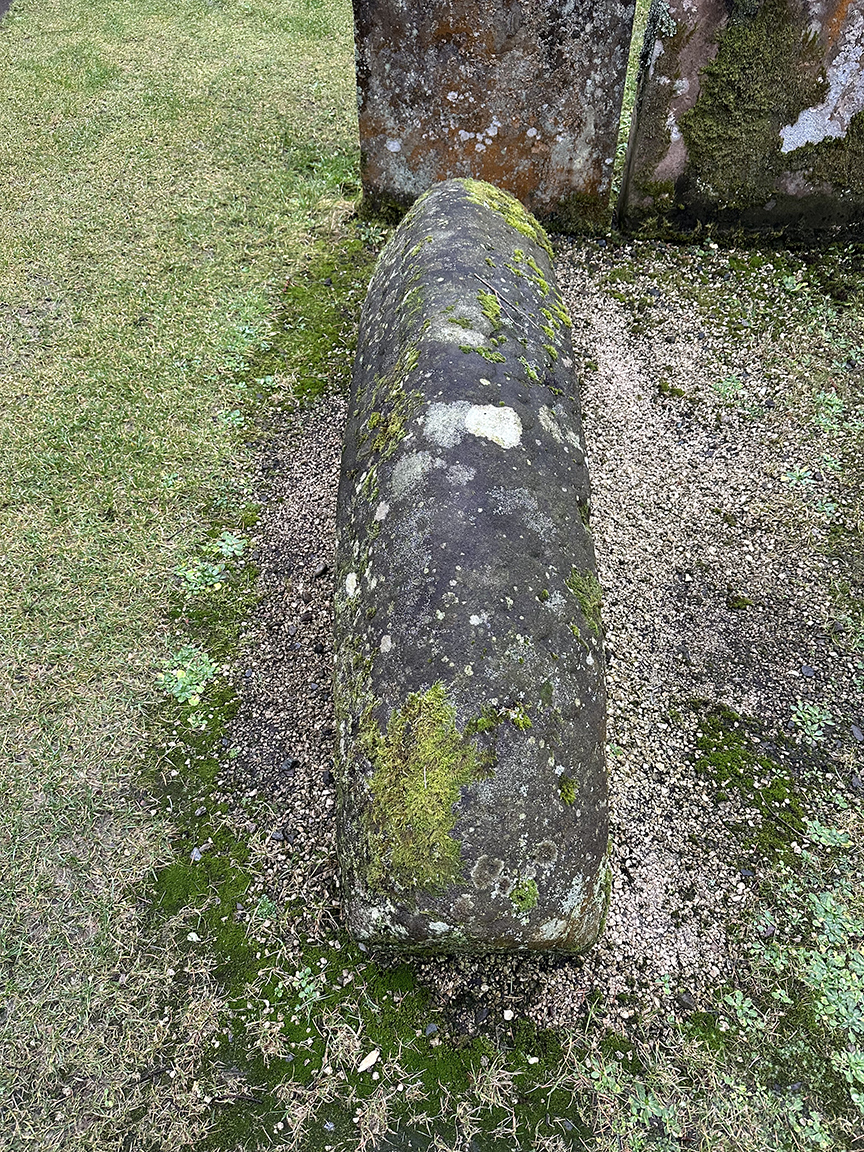
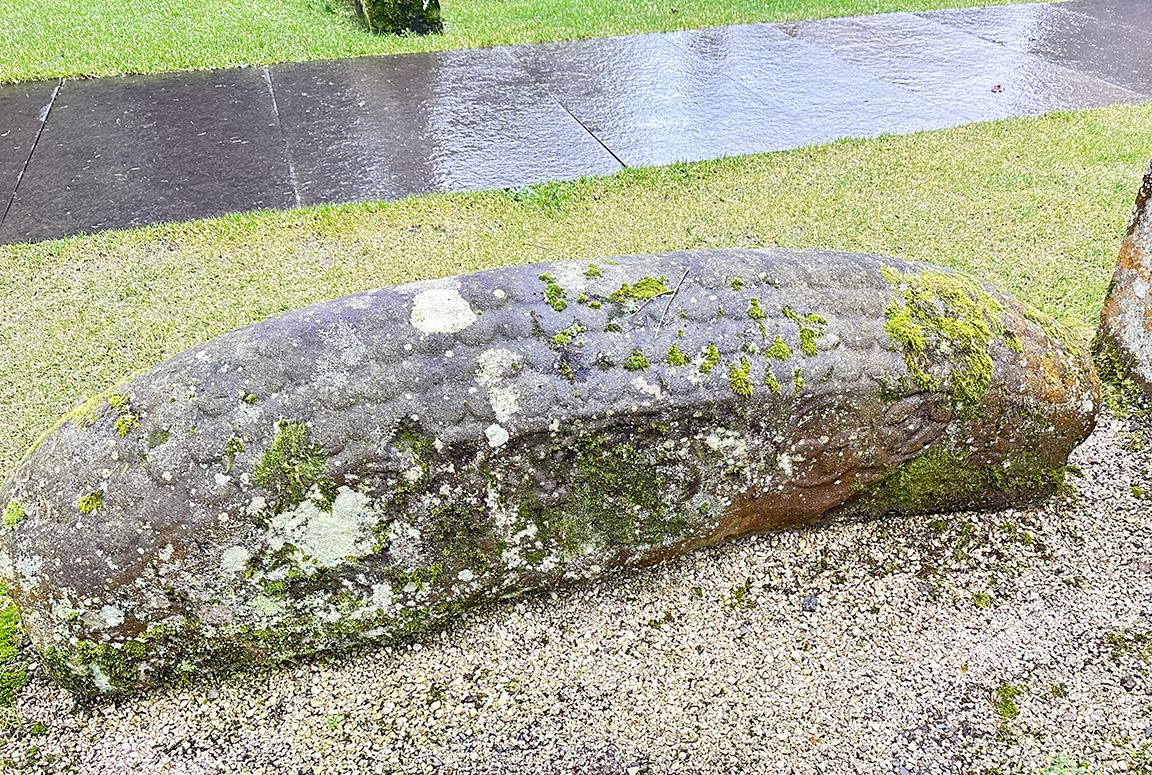
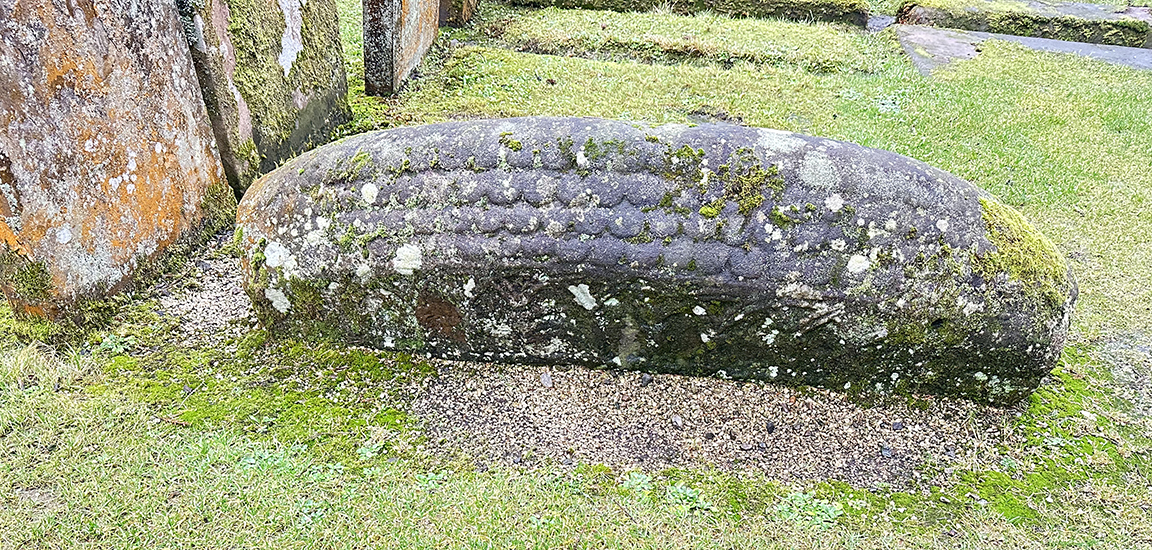
Viking Hogback Stone of Luss Lomand Scotland
This stone is thought to have dated from the Loch Lomond raid of 1263, when the Vikings had pillaged and settled on the lochside, maybe one Viking that stayed. It was unearthed in 1926 and was recently covered in moss, but now restored. The solid stone blocks are not, as the name might suggest, representations of pigs but stones designed to make the tombs of the dead look like mighty buildings in the Norse style. The bow-sided shape of the hogbacks is similar to the classic Viking house and the interlace patterns on them are also very Scandinavian in origin, but this type of stone is only found here in Britain. They are not to be found in Scandinavia; there were none to be found before the Vikings came here. It could be, as we were great carvers of stone, they saw this and emulated us. Govan in Glasgow has a large number of hogbacks and various other ancient stones, the hogbacks are found exclusively in areas of Northern Britain settled by Vikings, Southern Scotland, Cumbria and Yorkshire.
Gravestone commemorating Andrew Gemmell’s, Roxburgh Churchyard, Scottish Borders
